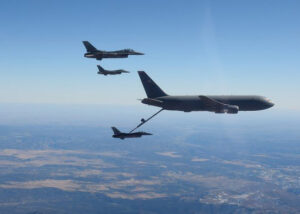
The Air Force is flying the Boeing [BA] KC-46 tanker and conducting fueling in exercises for some aircraft to build crew capability while awaiting remaining fixes to several key deficiencies, a top official said March 31. In 2020, the Air Force identified six Category I, or critical, deficiencies with the KC-46A. The service said it is working with Boeing to plan fixes, including a new Remote Vision System (RVS) 2.0. The RVS 2.0 aims to allow air refueling operator station…

 By
By 











